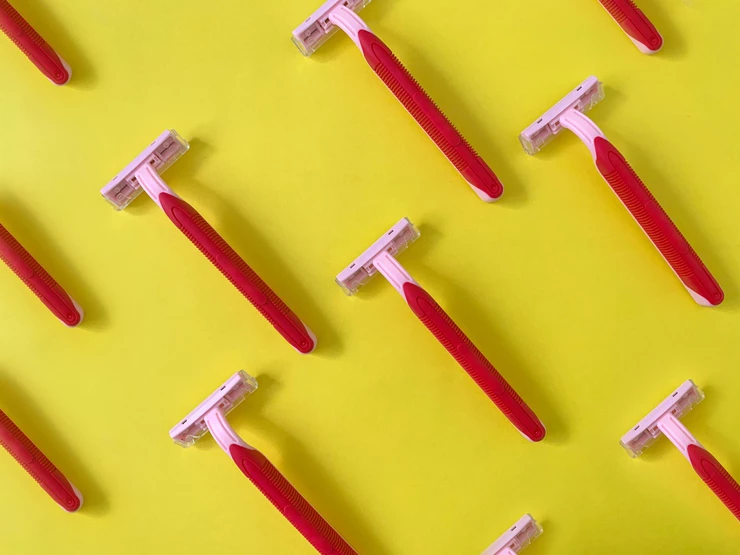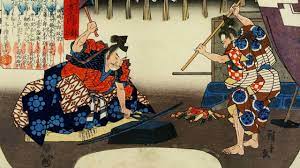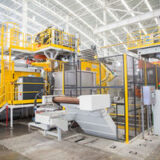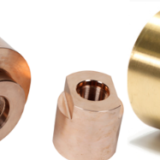
One of many applications of special steel is razor blade for shaving. “Shaving” is common practice despite the world of diversity (gender, race, age, religions).
Unlike automobile industry, the supply chain of shaving razor is quite limited. Although there are both global and regional razor companies in the world, a few global razor companies and steel mills dominate the razor market in the world.
Due to the cutting function, a razor blade requires steel material to be very hard. As a result, not so many steel mills can produce adequate steel.
This article introduces 1) Shavining Razor’s Technological Advances 2) Dominant Razor Companies 3) Dominant Special Steel Mills for Razor Blades 4) Other Special Steel Mills for Razor Blades.
Current razor blade as this image are called “safety razor”. It was invented by King Camp Gillette (founder of razor brand “Gillette”) in the 1900s. The razor blade was made by carbon steel (High carbon content steel, which is hard but easy to rust) until the 1960s. In the 1960s, stainless steel blade was invented to avoid rust and have economic benefit (a razor blade can be used multiple times, instead of carbon razor loosing sharpness as carbon razor gets rusted easily).

Ever since its invention, stainless steel blade has been the popular due to corrosion (rust) resitance. Cartrige type razor as the image below was invented for deep shaving in the 1970s. The number of blades contain multiple stainless blade inside a cartrige. Cartridge started with 2 blades. Now some cartridges contain 6 blades or gel seep out for smooth shaving. It certainly keeps evolving.

The dominant razor companies in the global shaving market are Protector & Gamble (hereafter P&G, its razor brand known as Gillete), Edgewell Personal Care (its razor brands known as Schick, Wilkinson sword, Persona etc) and Bic. To undersand roughly the size of their businesses, global sales of these companies related to shaving in 2021 were;
P&G : 6,440 mil USD (reference)
Edgewell Personal Care : 1,162 mil USD (reference)
Bic : 463 mil Euro (or around 480mil USD reference)
Apparently, P&G dominates the shaving razor market. In addition, shaving razor market is mostly for consumers. Business use for shaving razors such as beauty industry or medical industry has much smaller portion. Even considering other manufactures in the world such as Kai and Feather, P&G is expected to dominate more than 60% of the market share. Here are some brief descriptions of the dominant razor companies.
P&G has the largest market share in the world. Its HQ is located in the US. It has 64 manufacturing facilities in 26 countries. P&G localizes its production in each region of the world by acquiring local razor companies or outsourcing to them. Among manufacturing sites, only some are expected to make razor blades. P&G has expanded its production sites by acquiring or outsourcing to local manufactures. Compared to others, P&G’s razor production locations change dramatically and frequently.
Edgewell Personal Care has the second largest market share in the world. Its HQ is located in the US. It has 12 manufacturing facilities of razors in the US, Mexico, Israel, China, Czech Republic, and Germany (reference).
Bic has the third largest market share in the world. Its HQ is located in France. It has 4 manufacturing facilities of razors in France, Greece, Mexico, and Brazil (reference).
Stainless steel for razor blades requires high carbon content around 0.7% for hardness and some around 13% of chronium for corrosion resitance. Since the invention, steel mills of this stainless steel has been stable for mostly 3 mills as below. Who is the world’s largest producer of razor blade stainless steel? It is Hitachi Metals (Proterial).
Hitachi Metals (Proterial) : Estimated 60-70% of the market share, produced in Japan
Sandvik (Alleima) : Estimated 15-25% of the market share, produced in Sweden
Voestalpine (Ex-Uddeholm) : Estimated 10-20% of the market share, produced in Sweden
Apparently, Hitachi Metals dominate the base material of stainless steel for razors. Here are some brief descriptions of the dominant special steel mills.
Hitatchi Metals, now it is called Proterial, is a special steel mill from Japan. Its root comes from Tamahagane production for Japanese Katanas. The production facility is located in Yasugi city, Shimane prefecture. From ancient times, Yasugi has prospered to ship Hagane, base material for Katana. Locally, Tamahagane was made by Tatara bloomery method (An iron-making method in which iron sand and charcoal are burned in a simple furnace built of soil to obtain iron. Made with insomnia for 3 days). The Tamahagane has been forged into Katana over 1000 years. Historically, the steel from Yasugi has been hard and excellent for blade making. This history lead creation of Hitachi Metals and very hard steel making, including razor blades. Currently, Hitachi Metals is under procedure to acquired by an investment fund group. Hitachi Metals’ parent company, Hitachi ltd., is famous for shuffling its business units drastically. Due to low profitability, Hitachi ltd. has sold its majority shares of Hitachi Metals to the investment fund group. Under strong pressure of restructuring, Hitachi Metals may increase the price of its stainless steel for razor blade to improve its profitability, taking advantage of the strong market share.
(2023 Sep Update) Proterial has a rumor of not taking any new orders from new customers but only take orders from existing customers.

Sandvik, now it is called Alleima, is a special steel mill from Sweden. Its root of inventing an enhanced-productive steel production method. Ever since, Sandvik has focused on high quality and cutting edge steel making. Fortunately, it had good quality minerals nearby, so it could produce high quality steel (A side story; some knife fans in Japan love old Sandvik steel knives because of raw materials. Now Sandvik imports raw materials). Sandvik has worked on developing new materials (stainless steel and cemented carbide) as well as new processing machines (multistage compressor etc). These activities enabled Sandvik to produce stainless strip for razor blade production. Its management has been stable. It occupies all of supply chains from mining to rerolling process and the focust on cutting edge tooling industry results in high profit margins.

Uddeholm is another special steel mill from Sweden. It started as steel hammer company. Like Sandvik, it had good quality minerals nearby, so it could produce high quality steel. Uddeholm developed carbon razor blade with Gillete first, then developed stainless strip for razor blades (reference). The company has been through multiple of M&A. First Uddeholm was merged with Böhler, an Austrian steel company. Then, Voestalpine, another Austrian steel-based technology company aquired Böhler-Uddeholm. The production of stainless strip for razor blades continues in Sweden. Voestalpine has been profitable and its management seems to be stable.
For stainless steel razor, there are other steel mills from traditionally Europe and Japan. Recently new steel mills from China and India participate in this competion as their quality having improved. The three dominant razor companies have started adopting stainless steels from these new comers.
The essence of stainless steel for razor blade is hardness and workability (No tipping at sharpening process, no warp at quenching process etc). The chemical composition of stainless steel for razor is openly disclosed (Hitachi Metals’s Gin 5, Sandvik 13C26, Uddeholm AEB-L), however it is not easy to produce typically due to the lack of hardness after quenching process at the razor companies.
There might be two reasons of the difficulty. First, some tiny portion of special / secret chemicals are added (it is so little so that the chemical names are not shown in chemical compostion). Second, metallographic structure (tiny bits of steel) is small enough through the production process so that the heat is evenly spread during quenching process at razor companies.
The base material is very important. Still, rerolling process is also important to make hard, workable, razor thin, and stright material for razor companies to process.
In conclusion, the supply chain for shaving razor is quite simple and limited, despite the production volume. The main reason is the difficulty of making base material and rerolling process which make the best use of the base material. If you need to build a supply chain for steel strip, a good understanding of both base material and rerolling processes is necessary. Enserve offers the material used for razor blades to support you. Please feel free to contact us if you have any problems.


